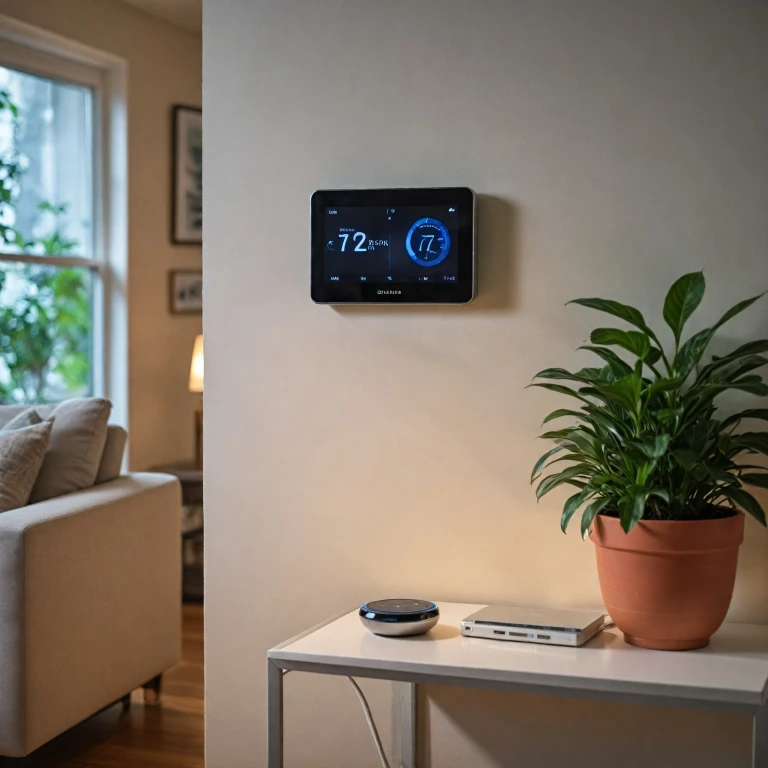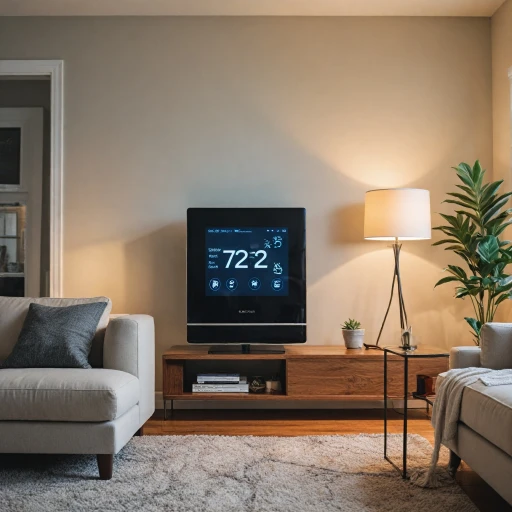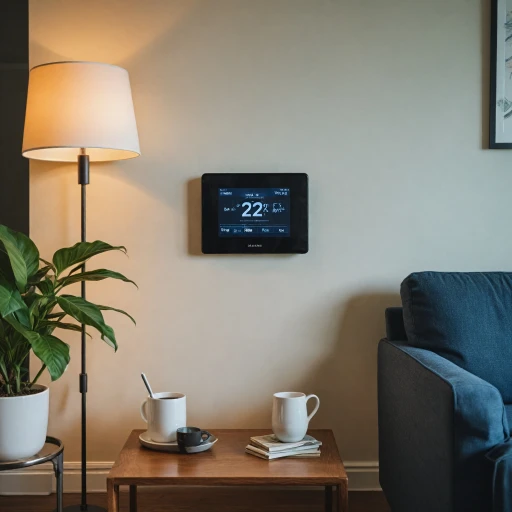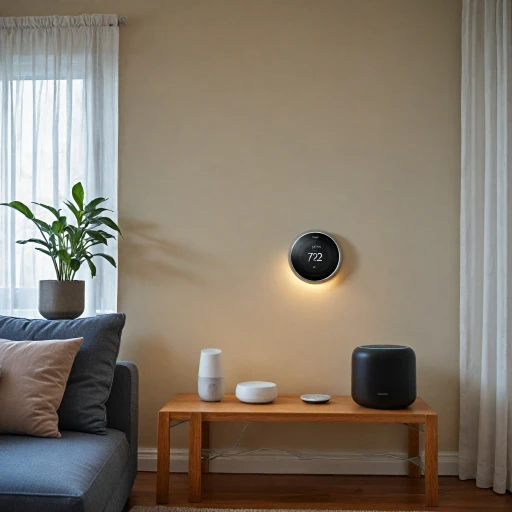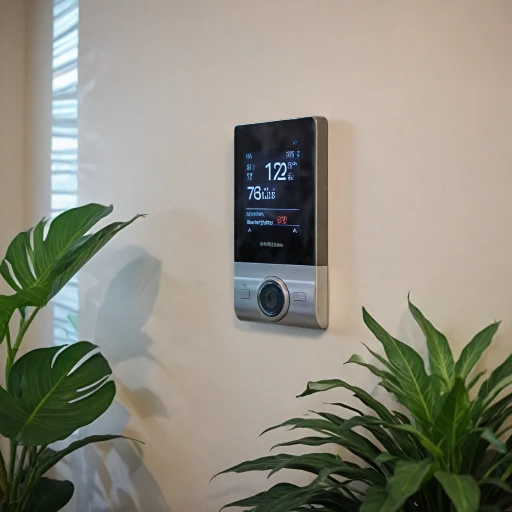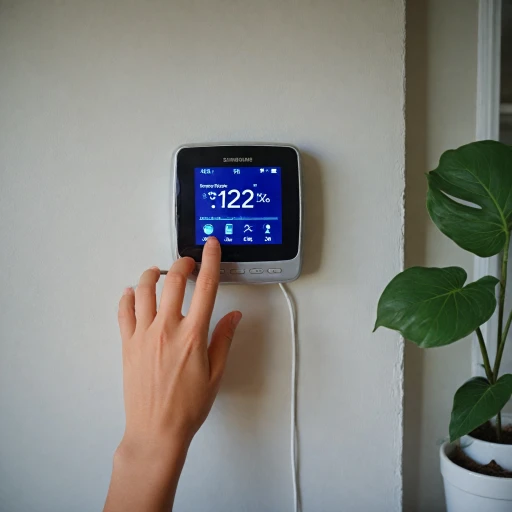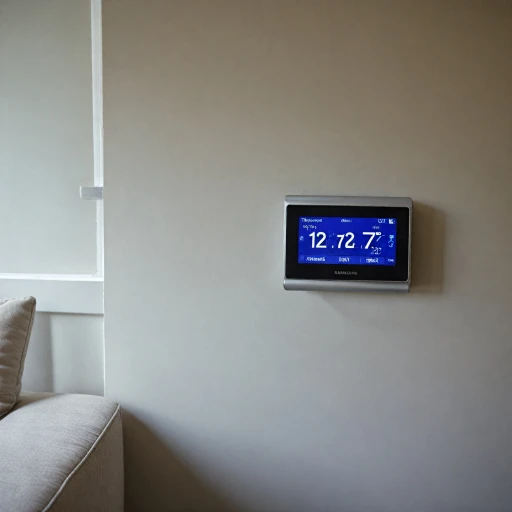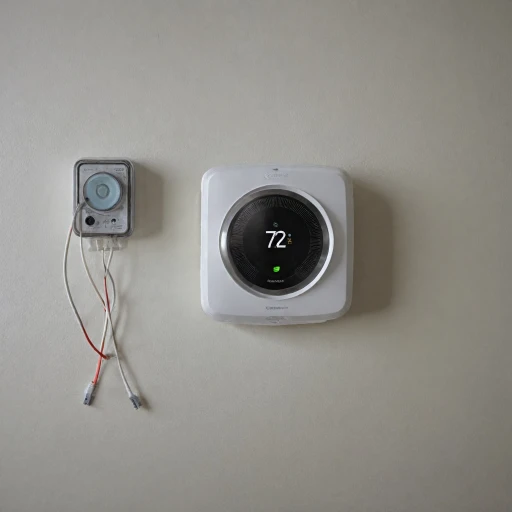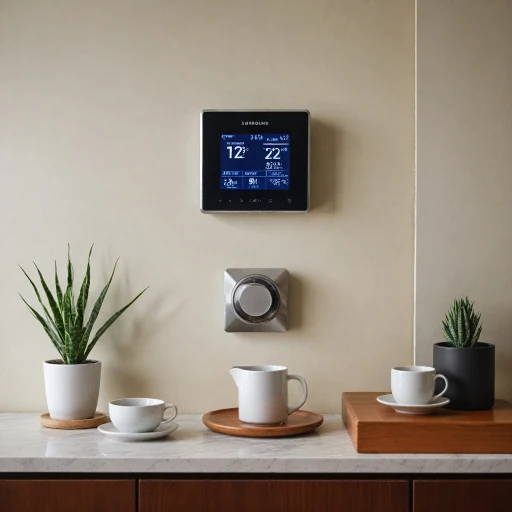
What is Alexa Thermostat Compatibility?
Understanding Alexa Compatibility for Thermostats
Alexa, Amazon's virtual assistant, has drastically reshaped how we interact with technology in our homes. When it comes to smart thermostats, Alexa's compatibility is a key feature for those seeking seamless automation and voice control in their HVAC systems. But what exactly does Alexa thermostat compatibility mean?
Simply put, Alexa compatibility refers to the ability of your smart thermostat to connect and communicate with Amazon Alexa. This connection allows for voice command control, facilitating a more integrated and convenient user experience. With a compatible smart thermostat, users can leverage Alexa to regulate temperature settings, switch between heating and cooling, and even monitor energy usage.
Not all smart thermostats are equal, and compatibility with Alexa is an important factor to consider when selecting the best smart thermostat for your needs. From the Ecobee SmartThermostat to Google Nest Learning Thermostat, the choices are diverse, each offering unique benefits.
This compatibility ensures that your thermostat works in tandem with other smart devices in your home, further optimizing energy efficiency and comfort. In the following sections, we dive deeper into popular models, setup instructions, and the myriad benefits of connecting your thermostat with Alexa, along with troubleshooting tips for common issues.
Popular Smart Thermostats Compatible with Alexa
Top Choices for Alexa-Compatible Thermostats
Choosing a smart thermostat that integrates seamlessly with Amazon Alexa can be overwhelming, considering the variety of options available today. However, several well-regarded models stand out for their compatibility and performance. Here's a closer look at some popular choices:- Ecobee SmartThermostat with Voice Control: The ecobee smart thermostat is a favorite among users for its robust functionality and integrated voice control features. With embedded Alexa capabilities, ecobee offers seamless interactions, allowing users to manage heating and cooling with simple voice commands. Its premium version also includes smarter temperature sensors and superior integration with various smart devices.
- Nest Learning Thermostat: Offering excellent compatibility with Alexa, the nest learning thermostat by Google nest adapts to your temperature preferences over time, enhancing energy savings. Its sophisticated design and outstanding learning capabilities have made it a popular choice for many households.
- Amazon Smart Thermostat: Although a relatively new participant, the Amazon smart thermostat integrates directly with Alexa, ensuring straightforward control and setup through the alexa app. It's designed to be budget-friendly, focusing on essential smart features while maintaining efficiency.
- Mysa Smart Thermostat: Perfect for electric heating systems, the Mysa thermostat is another great option that works well with Alexa. It gives users the ability to fine-tune their heating schedules and integrates with other smart devices for optimal home automation.
Compatibility Features
Compatibility with Alexa allows these thermostats to be controlled via voice commands, making it convenient to adjust the temperature, set schedules, or even check the ambient air quality—a popular feature in the latest models. These smart thermostats are capable of seamless integration into your existing HVAC systems, providing energy-efficient solutions tailored to your needs. However, ensuring your smart thermostat is compatible with Alexa involves more than just voice commands. For instance, understanding the role of the common wire (C-wire) is essential, as it powers most Wi-Fi-enabled thermostats. This information is crucial in determining whether your existing HVAC setup can support a new thermostat without additional wiring. Having a reliable and compatible smart thermostat can enhance your home's intelligent automation experience. As technology advances, these devices continually offer improved energy management solutions while providing enhanced control and comfort throughout your living space.Setting Up Your Smart Thermostat with Alexa
Integrating Your Smart Thermostat with Amazon Alexa
Setting up a smart thermostat with Amazon Alexa can significantly amplify the ease and efficiency of controlling your home's HVAC system. While this process may vary slightly depending on the brand and model of your smart thermostat, a few key steps are generally applicable.
First, ensure that your smart thermostat, like the Ecobee Smart, Google Nest, or the Nest Learning thermostat, is correctly installed and connected to your home Wi-Fi. Brands such as Ecobee and Nest offer user-friendly apps to assist with the setup, where you can manage everything from temperature settings to energy savings features. Once your device is connected, download the Alexa app on your mobile device if you haven't already.
Within the app, navigate to the "Devices" tab. From there, you can add your thermostat by connecting to the appropriate "Skill"—this refers to the integration capability between Alexa and your smart thermostat brand. For instance, connecting a Ecobee or Nest thermostat will involve enabling their respective skills in the Alexa app, essentially linking the two platforms.
After enabling the skill, use the app to discover devices. Alexa will scan your home network and list available devices, including those newly integrated. Once your device is recognized, you can customize device settings like naming the thermostat and assigning it to specific rooms or zones within your smart home network.
A further perk of this integration is using Alexa voice commands for straightforward control. Instead of manually adjusting settings, simply say "Alexa, set the living room thermostat to 72 degrees," and let Alexa handle the rest. This feature adds convenience, enhancing the comfort of your home environment without the need for manual adjustments.
For more on maintaining a seamless temperature control experience, discover the benefits of consumers energy and Nest thermostat integration which highlights further advantages of integrating these smart devices.
Benefits of Using Alexa-Compatible Thermostats
The Advantages of Alexa with Smart Thermostats
Integrating your smart thermostat with Amazon Alexa provides numerous benefits that enhance comfort, efficiency, and home automation. With Alexa, managing your thermostat becomes a seamless process, offering a variety of valuable advantages.- Convenient Voice Commands: One of the key benefits is the convenience of using voice commands to control your home's temperature. Whether you own a Nest Learning Thermostat, Ecobee Smart Thermostat, or Mysa devices, you can adjust settings hands-free, making it perfect for busy lifestyles.
- Energy Savings: Smart thermostats, such as the Ecobee Premium and Google Nest, utilize advanced temperature sensing and learning capabilities to optimize your HVAC systems. When paired with Alexa, these devices can further enhance energy efficiency by adapting to your daily routine and preferences, leading to potential cost savings on energy bills.
- Integration with Smart Home Systems: Alexa compatibility allows your thermostat to integrate with other smart home devices, such as Amazon smart speakers and the Alexa app. This allows you to create automated routines that harmonize your thermostat settings with other home activities – for example, lowering the temperature at night or turning up the heat as you approach your home.
- Enhanced Remote Control: With Alexa, adjusting your home's heating and cooling becomes more accessible through the Alexa app, giving you remote control over your thermostat settings from anywhere, even when you're not home.
- Improved Air Quality: Some Alexa-compatible thermostats, like the Ecobee Smart, come equipped with sensors that not only manage temperature but also monitor indoor air quality. Through Alexa, you can receive alerts and control air circulation to maintain a healthy environment.
- User Experience: The combination of Alexa's intuitive interface and smart thermostat technology makes it one of the best choices for enhancing comfort and convenience in your home. It transforms your heating and cooling experience into a more personalized and responsive system.
Troubleshooting Common Alexa and Thermostat Issues
Common Issues and Effective Solutions
Integrating smart thermostats with Amazon Alexa can bring significant convenience and energy efficiency to your home. However, like any technological setup, occasional issues may arise. Below, you'll find some common problems users face and practical solutions to ensure a seamless experience.Connectivity Challenges
Alexa requires a stable internet connection to communicate with your smart thermostat. If you're experiencing intermittent connectivity, consider the following:- Wi-Fi Signal: Ensure your thermostat and Alexa device are within range of your Wi-Fi router. Walls, furniture, or other obstructions can weaken the signal.
- Router Settings: Restart your router or check for firmware updates that could resolve connectivity issues.
- Network Congestion: Limit the number of devices on your network, especially during peak times, to free up bandwidth.
Recognition and Command Execution
Sometimes Alexa may not recognize your commands or execute them correctly:- Skill Activation: Ensure you've enabled the proper skills in the Alexa app for your specific thermostat brand, like ecobee or Google Nest.
- Voice Profile: Create a voice profile in the Alexa app to help it better understand your commands.
- Device Naming: Keep device names simple and distinct to avoid confusion during voice commands.
Compatibility Concerns
While many smart thermostats claim compatibility with Alexa, not all features may be supported:- Feature Limitations: Certain advanced functions, like detailed temperature reports or HVAC health diagnostics, might not be Alexa-compatible.
- Firmware Updates: Ensure your thermostat's firmware is up-to-date to access the latest features and improvements.
Temperature Inaccuracy
If your smart thermostat isn't adjusting temperatures as expected:- Sensor Placement: Check the placement of temperature sensors. They should be free from obstructions and away from direct sunlight or vents.
- Correct Calibration: Consult the thermostat's manual for calibration instructions to ensure accurate temperature readings.
Future Trends in Alexa and Smart Thermostat Integration
Emerging Trends in Smart Thermostat and Alexa Integration
The world of smart home technology is ever-evolving, and the integration between smart thermostats and Alexa is no exception. These collaborations bring enhanced control, convenience, and energy efficiency to the forefront. As the demand for smart home connectivity grows, major players like Amazon and Google continue to innovate. The competition fuels the development of advanced features within smart thermostats such as the ecobee smart, Nest Learning Thermostat, and others that are compatible with Amazon Alexa and Google Nest ecosystems.- Advanced HVAC System Management: Future developments aim to refine control over HVAC systems with more intuitive interfaces through the Alexa app. Improved voice recognition will likely facilitate more accurate communication with devices, ensuring comfort and energy savings.
- Enhanced Temperature Sensors: The role of temperature sensors is pivotal in smart thermostats. Future systems are set to employ more sophisticated, learning algorithms that optimize heating and cooling based on energy usage patterns, which Amazon smart thermostats and the like are beginning to adopt.
- Interconnected Smart Devices: The focus on creating a seamless smart home environment continues. The integration of smart thermostats with other devices—beyond the current smart thermostat, Amazon Echo, and even Nest Learning compatibility—shows promise for interconnected air quality systems, smart lighting, and even Alexa-controlled appliances.
- Energy Efficiency Initiatives: With environmental concerns taking center stage, future smart thermostats will likely prioritize extensive energy savings. Companies are focusing on energy-efficient design and incorporating sustainable practices to meet growing consumer demand.
- Improved User Interfaces: As the industry progresses, expect to see more intuitive UI designs in smart thermostats that make it even simpler for users to manage their home's climate control. Advanced learning capabilities will work in tandem with sleek interfaces, allowing users to maximize the benefits of their HVAC systems with ease.
